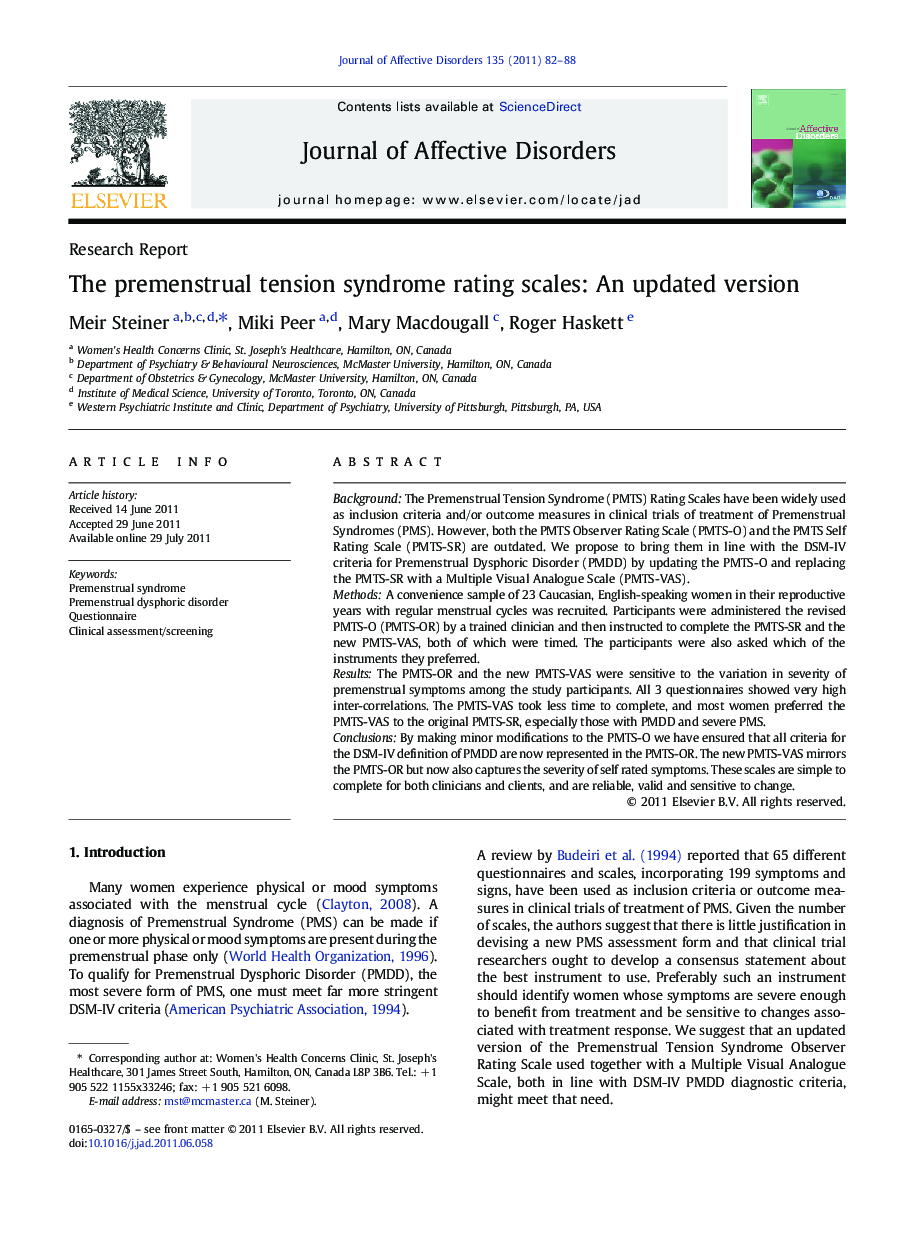| کد مقاله | کد نشریه | سال انتشار | مقاله انگلیسی | نسخه تمام متن |
|---|---|---|---|---|
| 6235569 | 1608184 | 2011 | 7 صفحه PDF | دانلود رایگان |

BackgroundThe Premenstrual Tension Syndrome (PMTS) Rating Scales have been widely used as inclusion criteria and/or outcome measures in clinical trials of treatment of Premenstrual Syndromes (PMS). However, both the PMTS Observer Rating Scale (PMTS-O) and the PMTS Self Rating Scale (PMTS-SR) are outdated. We propose to bring them in line with the DSM-IV criteria for Premenstrual Dysphoric Disorder (PMDD) by updating the PMTS-O and replacing the PMTS-SR with a Multiple Visual Analogue Scale (PMTS-VAS).MethodsA convenience sample of 23 Caucasian, English-speaking women in their reproductive years with regular menstrual cycles was recruited. Participants were administered the revised PMTS-O (PMTS-OR) by a trained clinician and then instructed to complete the PMTS-SR and the new PMTS-VAS, both of which were timed. The participants were also asked which of the instruments they preferred.ResultsThe PMTS-OR and the new PMTS-VAS were sensitive to the variation in severity of premenstrual symptoms among the study participants. All 3 questionnaires showed very high inter-correlations. The PMTS-VAS took less time to complete, and most women preferred the PMTS-VAS to the original PMTS-SR, especially those with PMDD and severe PMS.ConclusionsBy making minor modifications to the PMTS-O we have ensured that all criteria for the DSM-IV definition of PMDD are now represented in the PMTS-OR. The new PMTS-VAS mirrors the PMTS-OR but now also captures the severity of self rated symptoms. These scales are simple to complete for both clinicians and clients, and are reliable, valid and sensitive to change.
Journal: Journal of Affective Disorders - Volume 135, Issues 1â3, December 2011, Pages 82-88